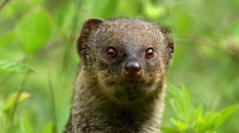

 Anthropozoologica
56 (1) - Pages 1-22
Anthropozoologica
56 (1) - Pages 1-22Between 1870 and 1900, planters introduced the small Indian mongoose, Urva auropunctata (Hodgson, 1836), in sugar-producing islands of the West Indies to control rats as well as venomous snakes in the two islands where they were present. Today, this species is part of ecosystems and agrosystems of a large number of islands. Here, we reviewed the history of its introductions to Trinidad, Jamaica and the French West Indies, through reading available documents. We corrected or specified some dates of introduction. After claiming introduction of mongoose, West Indian colonial societies soon denounced negative consequences, relating to its presence and looked for effective control methods. Regarding insular ecosystems functioning and biodiversity, it is clear that presence of this introduced mammalian predator had an important impact on densities of many local species, which may have contributed to the extinction of some of them.
Trinidad, Jamaica, French West Indies, West Indian colonial societies, mammalian predator, extinction.